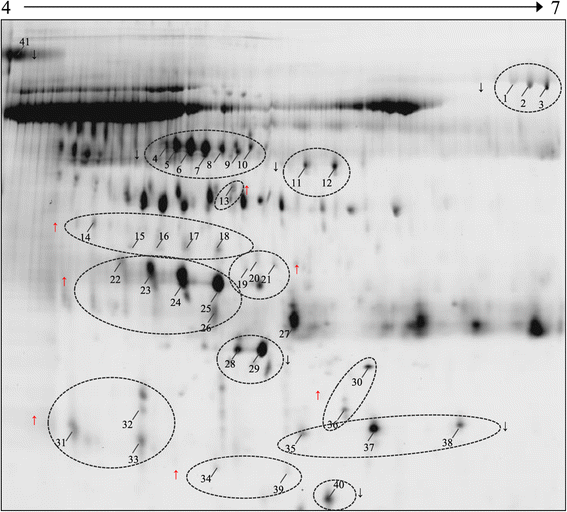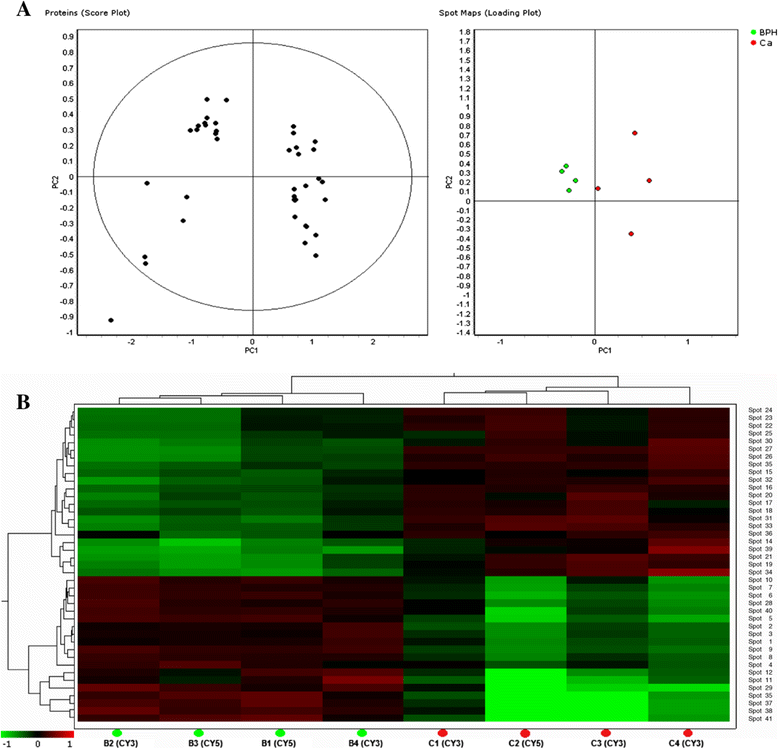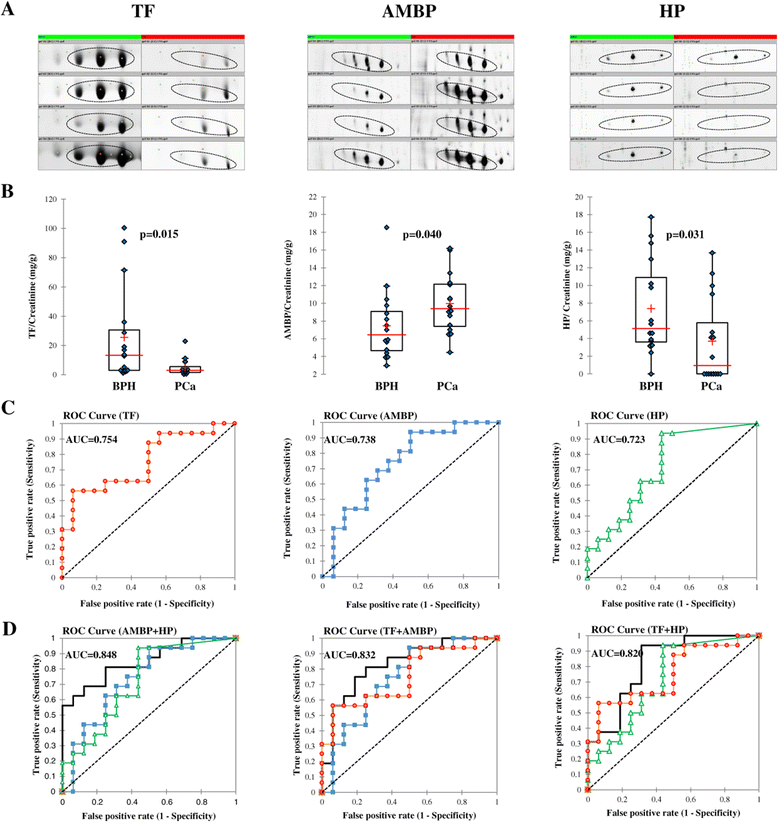Proteomics analysis of urine reveals acute phase response proteins as candidate diagnostic biomarkers for prostate cancer
- PMID: 25653573
- PMCID: PMC4316650
- DOI: 10.1186/s12953-014-0059-9
Proteomics analysis of urine reveals acute phase response proteins as candidate diagnostic biomarkers for prostate cancer
Abstract
Despite the overall success of prostate specific antigen (PSA) in screening and detection of prostate cancer (PCa), its use has been limited due to the lack of specificity. The principal driving goal currently within PCa research is to identify non-invasive biomarker(s) for early detection of aggressive tumors with greater sensitivity and specificity than PSA. In this study, we focused on identification of non-invasive biomarkers in urine with higher specificity than PSA. We tested urine samples from PCa and benign prostatic hyperplasia (BPH) patients by 2-D DIGE coupled with MS and bioinformatics analysis. Statistically significant (p < 0.05), 1.8 fold variation or more in abundance, showed 41 spots, corresponding to 23 proteins. The Ingenuity Pathway Analysis showed significant association with the Acute Phase Response Signaling pathway. Nine proteins with differential abundances were included in this pathway: AMBP, APOA1, FGA, FGG, HP, ITIH4, SERPINA1, TF and TTR. The expression pattern of 4 acute phase response proteins differed from the defined expression in the canonical pathway. The urine levels of TF, AMPB and HP were measured by immunoturbidimetry in an independent validation set. The concentration of AMPB in urine was significantly higher in PCa while levels of TF and HP were opposite (p < 0.05). The AUC for the individual proteins ranged from 0.723 to 0.754. The combination of HP and AMBP yielded the highest accuracy (AUC = 0.848), greater than PSA. The proposed biomarker set is quickly quantifiable and economical with potential to improve the sensitivity and specificity of PCa detection.
Keywords: 2-D DIGE; Benign prostate hyperplasia; MS; Non-invasive biomarkers; Prostate cancer; Urine analysis.
Figures




Similar articles
-
Comparative Proteomics Analysis of Urine Reveals Down-Regulation of Acute Phase Response Signaling and LXR/RXR Activation Pathways in Prostate Cancer.Proteomes. 2017 Dec 29;6(1):1. doi: 10.3390/proteomes6010001. Proteomes. 2017. PMID: 29286311 Free PMC article.
-
Zinc α2-glycoprotein as a potential novel urine biomarker for the early diagnosis of prostate cancer.BJU Int. 2012 Dec;110(11 Pt B):E688-93. doi: 10.1111/j.1464-410X.2012.11501.x. Epub 2012 Sep 28. BJU Int. 2012. PMID: 23020913
-
More advantages in detecting bone and soft tissue metastases from prostate cancer using 18F-PSMA PET/CT.Hell J Nucl Med. 2019 Jan-Apr;22(1):6-9. doi: 10.1967/s002449910952. Epub 2019 Mar 7. Hell J Nucl Med. 2019. PMID: 30843003
-
Proteomics in diagnosis of prostate cancer.Pril (Makedon Akad Nauk Umet Odd Med Nauki). 2015;36(1):5-36. Pril (Makedon Akad Nauk Umet Odd Med Nauki). 2015. PMID: 26076772 Review.
-
Urinary biomarkers in prostate cancer detection and monitoring progression.Crit Rev Oncol Hematol. 2017 Oct;118:15-26. doi: 10.1016/j.critrevonc.2017.08.002. Epub 2017 Aug 19. Crit Rev Oncol Hematol. 2017. PMID: 28917266 Review.
Cited by
-
A New Era of Prostate Cancer Precision Medicine.Front Oncol. 2019 Nov 26;9:1263. doi: 10.3389/fonc.2019.01263. eCollection 2019. Front Oncol. 2019. PMID: 31850193 Free PMC article. Review.
-
Transcriptomic profiles of tumor-associated neutrophils reveal prominent roles in enhancing angiogenesis in liver tumorigenesis in zebrafish.Sci Rep. 2019 Feb 6;9(1):1509. doi: 10.1038/s41598-018-36605-8. Sci Rep. 2019. PMID: 30728369 Free PMC article.
-
How interacting pathways are regulated by miRNAs in breast cancer subtypes.BMC Bioinformatics. 2016 Nov 8;17(Suppl 12):348. doi: 10.1186/s12859-016-1196-1. BMC Bioinformatics. 2016. PMID: 28185585 Free PMC article.
-
Construction and analysis of protein-protein interaction networks based on proteomics data of prostate cancer.Int J Mol Med. 2016 Jun;37(6):1576-86. doi: 10.3892/ijmm.2016.2577. Epub 2016 Apr 26. Int J Mol Med. 2016. PMID: 27121963 Free PMC article.
-
DIGE Analysis Software and Protein Identification Approaches.Methods Mol Biol. 2023;2596:39-50. doi: 10.1007/978-1-0716-2831-7_3. Methods Mol Biol. 2023. PMID: 36378429
References
LinkOut - more resources
Full Text Sources
Other Literature Sources
Research Materials
Miscellaneous

